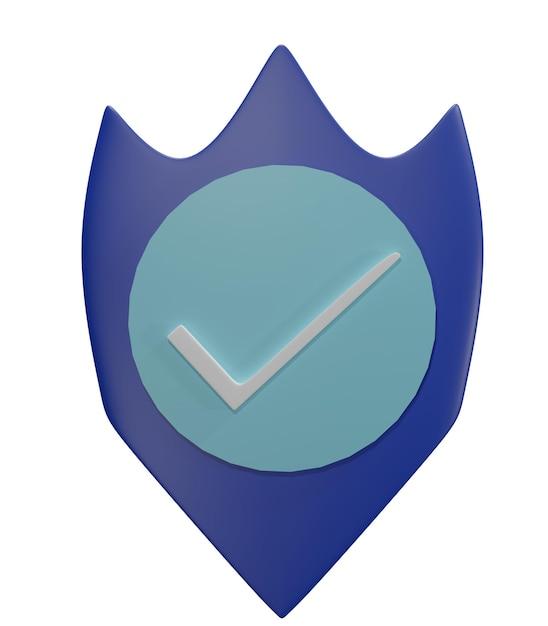Welcome to our beginner’s guide to PCI DSS, the Payment Card Industry Data Security Standards. If you’ve ever wondered what PCI DSS is or why it matters, you’re in the right place. In this blog post, we’ll break it down for you in simple terms, without overwhelming you with technical jargon. Whether you’re a business owner or just curious about payment card security, we’ve got you covered! But first, let’s delve into the basics.
Title: PCI DSS for Dummies: Simplifying Payment Card Industry Data Security Standards
PCI DSS for Dummies: A Simple Guide to Payment Card Security
Understanding PCI DSS: What is it
Now, before we dive into this whole PCI DSS thing, let’s break it down in simple terms. PCI DSS stands for Payment Card Industry Data Security Standard. Yeah, I know it sounds like some secret code, but it’s actually a set of rules and guidelines designed to keep our precious payment card information safe and sound.
Why Should You Care
If you’re thinking, “Meh, who needs to bother with this PCI DSS stuff?” Well, let me tell you a little story. Imagine you’re at your favorite online store, finally ready to click that “Buy Now” button, and suddenly, your card details get hacked. Poof! All your money disappears into thin air, like a magician’s trick gone horribly wrong. Trust me, you don’t want that to happen. So, PCI DSS is here to save the day and prevent that nightmare from becoming your reality.
The Basics: Who Does What
So, you might be wondering, “Who’s responsible for all this fancy PCI DSS thingamajig?” Great question, my friend! Everyone involved in handling payment card information has a role to play. Let’s break it down:
Merchant – Your Role as a Business Owner
As a merchant, it’s your duty to ensure that every payment card transaction you process is done securely. This means implementing some safety measures like firewalls, encryption, and antivirus software to protect your customers’ sensitive data. And please, don’t ever use “password123” as your admin password. Seriously, just don’t.
Service Provider – Putting the “Service” in “PCI DSS”
These guys are the ones who handle your payment card data on your behalf. So, make sure you choose a reliable service provider who knows their stuff when it comes to PCI DSS compliance. You wouldn’t want to leave your payment card information in the hands of someone who treats it like a potato, right?
Card Brands – Keeping an Eye on Things
The card brands, like Visa, Mastercard, and those fancy folks, are always on the lookout to make sure everyone is playing by the rules. They can impose fines on merchants who aren’t PCI DSS compliant, which can really put a dent in your wallet. So, it’s better to follow the guidelines and stay on their good side.
Compliance: The Path to PCI DSS Glory
Now that we’ve got the basics covered, let’s talk about the path to PCI DSS glory. Becoming PCI DSS compliant may seem daunting, but fear not, my friend. It’s all about tackling things step by step. Here’s what you should keep in mind:
Self-Assessment Questionnaire (SAQ) – The Report Card
The SAQ is like a report card for PCI DSS compliance. It helps you assess your current security measures and highlights any areas where you might need to up your game. Think of it as a way to level up in the game of payment card security. So, grab your pencil, and let’s get down to business!
Compliance Checklist – Dotting the “i’s” and Crossing the “t’s”
This handy-dandy checklist ensures you’ve covered all the necessary requirements for PCI DSS compliance. It’s like a treasure map leading you to the land of secure transactions. Just follow the “X marks the spot” and make sure every box is ticked. Arr, matey!
Alright, that’s the lowdown on PCI DSS for dummies. Remember, it’s all about keeping our payment card information safe and secure. So, next time you’re doing some online shopping or swiping that card at a store, give a little “thank you” to PCI DSS for keeping your hard-earned money out of the wrong hands. Stay safe, stay compliant, and happy shopping!
PCI DSS for Beginners: All You Need to Know
PCI DSS PDF: Your Ultimate Guide to Understanding Payment Card Security Standards
If you’re new to the world of PCI DSS (that stands for Payment Card Industry Data Security Standard), you might be wondering where to start and how to get your hands on all the necessary information. Luckily, there’s an easy solution in the form of a PDF. Yes, you read that right—a PDF! In this section, we’ll break down everything you need to know about PCI DSS PDFs in a fun and informative way.
What is a PCI DSS PDF anyway?
Think of a PCI DSS PDF as your personal tour guide through the maze of payment card security standards. It’s like having a knowledgeable friend who can explain all the jargon and technicalities in plain English, without putting you to sleep. These PDFs contain all the essential information you need to understand PCI DSS, from the basics to the nitty-gritty details.
Where can you find a PCI DSS PDF?
Finding a PCI DSS PDF is easier than finding the last chocolate chip cookie in the jar. Seriously, there are plenty of resources available online where you can download a PDF version of the standard without breaking a sweat. Just fire up your favorite search engine and give it a whirl. You’ll be amazed at the number of options at your fingertips.
Why should you bother with a PDF?
Okay, we get it. Reading a PDF might not be as exciting as binge-watching your favorite TV show, but the benefits are well worth it. With a PCI DSS PDF, you can learn at your own pace, refer back to specific sections whenever you need a refresher, and avoid getting overwhelmed by loads of information. Plus, you can take it with you wherever you go—no heavy textbooks required!
What can you expect to find in a PCI DSS PDF?
In a nutshell, a PCI DSS PDF will walk you through the 12 requirements of the standard, covering topics like securing your network, protecting cardholder data, and implementing strong access control measures. It will provide real-world examples, tips, and best practices to help you understand and implement the standard in your own organization. Just remember, this is your friendly guide, not a boring textbook!
So, if you’re new to the world of PCI DSS and feeling overwhelmed, take a deep breath and grab a cup of coffee. With a PCI DSS PDF in hand, you’ll be well on your way to becoming a payment card security guru in no time. Happy reading!
PCI DSS 3.2.1 Requirements XLS: Simplifying Compliance in Spreadsheets
Breaking Down PCI DSS 3.2.1 in Excel
So, you’ve heard about the much talked-about PCI DSS 3.2.1 requirements and, understandably, your eyelids started to droop. Don’t worry, friend! We’ve got a convenient solution that will make their implementation feel as breezy as cobweb-laden Halloween decorations. Out with the complex manuals and in with everyone’s favorite spreadsheet tool: Excel!
The “Must-Haves” of PCI DSS 3.2.1
When tackling PCI DSS 3.2.1, you’ll need to cover a few bases. Let’s dive right in:
1. Documentation (Because “Just Trust Me” Won’t Cut It)
Start by documenting your PCI DSS compliance efforts. Create that Excel sheet, give it a snazzy name, and start listing out your processes, controls, and lovely efforts to keep sensitive cardholder data safe and sound.
2. Network Security (Stopping Hackers with Virtual Mousetraps)
Make sure your network is as secure as your Aunt Matilda’s secret meatball recipe. Use firewalls, encrypted transmissions, and fancy user authentication measures to keep malicious hackers at bay. In your trusty spreadsheet, create a column for each security control you implement to keep track of your safety net.
3. Secure Cardholder Data Storage (Because Your Customers Deserve a Fort Knox)
Time to put those encryption skills to good use! Storing cardholder data should be about as easy as avoiding a stack of dirty dishes in the sink. Encrypt that valuable information and only store what you absolutely need. Remember, unnecessary hoarding is for raccoons, not businesses.
4. Regular System Monitoring (Channel Your Inner Sherlock Holmes)
No detective skills required, but a watchful eye is a must! Monitor your network like a hawk to catch any irregularities or suspicious activities. Use your ever-ready spreadsheet to jot down those routine check-ups and ensure you’re staying on top of the game.
5. Incident Response (Forget Superheroes; We’ve Got Plan B)
In the unfortunate event of a security breach, make sure you have an incident response plan ready to go. Outline the steps you’ll take to minimize the damage, inform the relevant parties, and get back on your feet. Pro tip: It might be helpful to keep your incident response plan in a tab of your trusty Excel sheet for easy access.
A Spreadsheet Revolution (Just Don’t Forget the Formulas)
With the power of Excel, those daunting PCI DSS 3.2.1 requirements become manageable tasks. Adapt, slice, and dice your spreadsheet to fit your unique business needs. And voila! You’re on your way to PCI DSS compliance glory.
So, grab your mouse (or trackpad) and unleash your inner spreadsheet wizard. With a combination of organization, wit, and a touch of colorful formatting, you’ll conquer PCI DSS 3.2.1 with ease. Happy spreadsheeting, my friend!
What is PCI DSS in Simple Terms
PCI DSS, or Payment Card Industry Data Security Standard, might sound like a boring bureaucratic nightmare, but fear not! Let’s break it down in simple terms, without putting you to sleep.
Protect Your Plastic!
Imagine you’re at a party, and you’ve got this fancy credit card in your wallet. Now, PCI DSS is like the bouncer at the door, ensuring your card is safe from potential intruders. It sets the rules and standards that businesses must follow to protect your precious plastic.
The A-Team of Security
PCI DSS is like the Avengers of the payment card world. It’s a comprehensive framework that brings together all the essential security measures to safeguard your card data. Think of it as Captain America, Iron Man, Black Widow, and Hulk teaming up to keep your information safe from evil villains!
A Gang of Six
To make things even more exciting, PCI DSS is made up of six buzzword-worthy security objectives: Build and Maintain a Secure Network, Protect Cardholder Data, Maintain a Vulnerability Management Program, Implement Strong Access Control Measures, Regularly Monitor and Test Networks, and Maintain an Information Security Policy. It’s like a highly skilled gang of heroes, each with their unique superpower, working together to protect your sensitive information.
Time for a Checkup
Just like going for a checkup at the doctor’s, businesses need to undergo regular PCI DSS assessments to ensure they are compliant with the standard. These assessments are like health checkups, making sure the businesses are following the rules and keeping your card data safe and sound.
Don’t Fall for Villainous Schemes!
With cybercriminals inventing new tricks every day, PCI DSS is constantly evolving to stay one step ahead. It’s like a never-ending battle between superheroes and supervillains, with PCI DSS striving to protect your card data from the evil clutches of hackers and thieves.
So, next time someone mentions PCI DSS, you can impress them with your newfound knowledge. Just remember that it’s the superhero of card security, keeping your precious plastic safe from the clutches of the bad guys!
What Does PCI DSS Cover
1. Cardholder Data Security
PCI DSS is all about keeping your customers’ cardholder data safe and secure. It covers everything from the moment your customers swipe, dip, or tap their cards, to the transmission and storage of that sensitive information. Think of it as a virtual fortress protecting your customers’ precious payment data from the clutches of cybercriminals.
2. Network Security
No, we’re not talking about an impenetrable force field around your office (although that would be pretty cool). PCI DSS requires you to establish and maintain a secure network to fend off those pesky hackers. This involves setting up firewalls, using strong passwords, and regularly updating your systems to repel any unauthorized access attempts.
3. Vulnerability Management
Hey, even the strongest fortresses need regular check-ups. PCI DSS requires you to scan your systems regularly for vulnerabilities and promptly patch any weak spots you find. It’s like going to the doctor for a check-up to make sure you’re in tip-top shape. Only in this case, it’s your business’s cybersecurity health that’s at stake.
4. Access Controls
Ever invited a random stranger to your birthday party? Yeah, we didn’t think so. PCI DSS agrees. It makes sure you have proper access controls in place, so only authorized personnel can access sensitive cardholder data. This means unique user IDs, authentication protocols, and restrictions on who can view or modify customer information. No unauthorized persons allowed!
In a nutshell, PCI DSS covers the whole shebang when it comes to keeping your customers’ payment data safe. From protecting the physical aspect of card processing to securing your network and weeding out vulnerabilities, it’s like having your very own cybersecurity superhero fighting the forces of evil (aka cybercriminals). So, grab your cape and start complying with those requirements like the superstar you are! 🦸♂️✨


